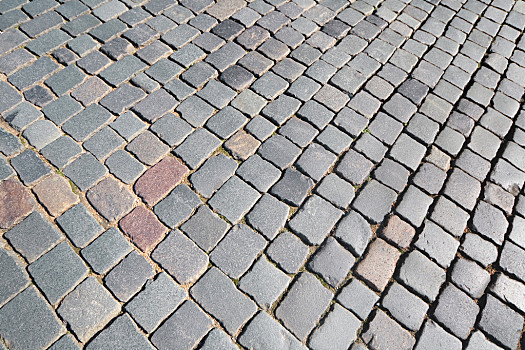|
Stone-paved roads, this ancient and unique architectural form, are not only an important component of ancient Chinese culture but also an indispensable part of modern urban landscapes.

Having weathered millennia of vicissitudes, stone-paved roads have witnessed countless historical changes and evolutionary eras, and with their unique charm and historical value, they serve as a bridge connecting the past and the future.
I. The history and development of stone paving road
Stone-paved roads have a long history in China dating back thousands of years to the Zhou Dynasty.
Initially, this type of pavement was mainly used in imperial courtyards or important religious sites such as temples and imperial mausoleums.
By the Ming and Qing dynasties, with the acceleration of urbanization and technological advancements, stone-paved roads gradually became prevalent on major urban streets and ordinary residential areas.
In traditional Chinese architecture, stone-paved roads not only serve practical functions but also carry profound cultural significance.
Choosing the material and patterns often symbolizes auspiciousness and prosperity.
For example, many ancient city stone-paved roads feature auspicious motifs such as "Fu" (blessing) and "Shou" (longevity), or are painted in vibrant colors, making them not only aesthetically pleasing but also rich in cultural heritage.
II. Stone paving process and materials
The materials used for making stone-paved roads are mostly hard granite, limestone, and bluestone, which are wear-resistant and have high compressive strength, making them very suitable for road paving.
In ancient times, the technology of making stone slabs was highly refined, craftsmen had to manually cut the stones according to their properties to ensure that each slab was just the right size and thickness.
In addition to traditional square or rectangular stone slabs, some special designs such as the "fishbone" pattern not only enhance the aesthetics of the pavement but also offer greater practicality, effectively preventing slipping and reducing water accumulation.
In some historically significant cities, such as Beijing's hutongs or Suzhou's gardens, these stone-paved roads are an important means to showcase their unique craftsmanship and aesthetic value.
Three, stone paving road and contemporary urban planning
With the advancement of modernization, stone-paved roads have taken on new roles in the urban environment.
Many old district renovation projects in cities have deliberately preserved or relaid stone paths, which not only shows respect for urban history but also adds a touch of ancient charm to modern cities.
In modern urban planning, stone-paved roads are not only pathways connecting two places but have also become a form of cultural expression.
For example, in Shanghai's Xintiandi, the stone-paved roads seamlessly integrate traditional and modern elements, transforming it into a fashionable leisure and shopping destination, showcasing the new vitality of stone-paved roads in contemporary society.
IV. Cultural value and protection of stone paving road
The protection and inheritance of stone-paved roads is an important way to connect ancient and modern cultures.
For many cities with rich historical heritage, the restoration work of stone-paved roads is both a technical challenge and a cultural responsibility.
By combining traditional craftsmanship with modern materials, not only has the historical appearance of stone-paved roads been maintained, but their lifespan has also been extended, allowing them to continue contributing to the beauty of the city and the quality of life for residents.
In addition, stone-paved roads often become subjects in literary and artistic works from ancient poets 'verses to modern film scenes the traces of stone-paved roads can be seen everywhere.
These works express people's cherishing of historical homeland and cultural memories through the medium of stone-paved roads.
Epilogue
Stone-paved roads are the crystallization of ancient Chinese wisdom and art, witnessing the changes of history and the transmission of culture.
In modern society, stone-paved roads are not only a form of road but also a bridge to history, connecting ancient memories with the rhythm of modern life.
In future development, we need to pay more attention to the protection and rational utilization of these cultural heritages, allowing stone-paved roads to shine with new brilliance in the new era context.
|